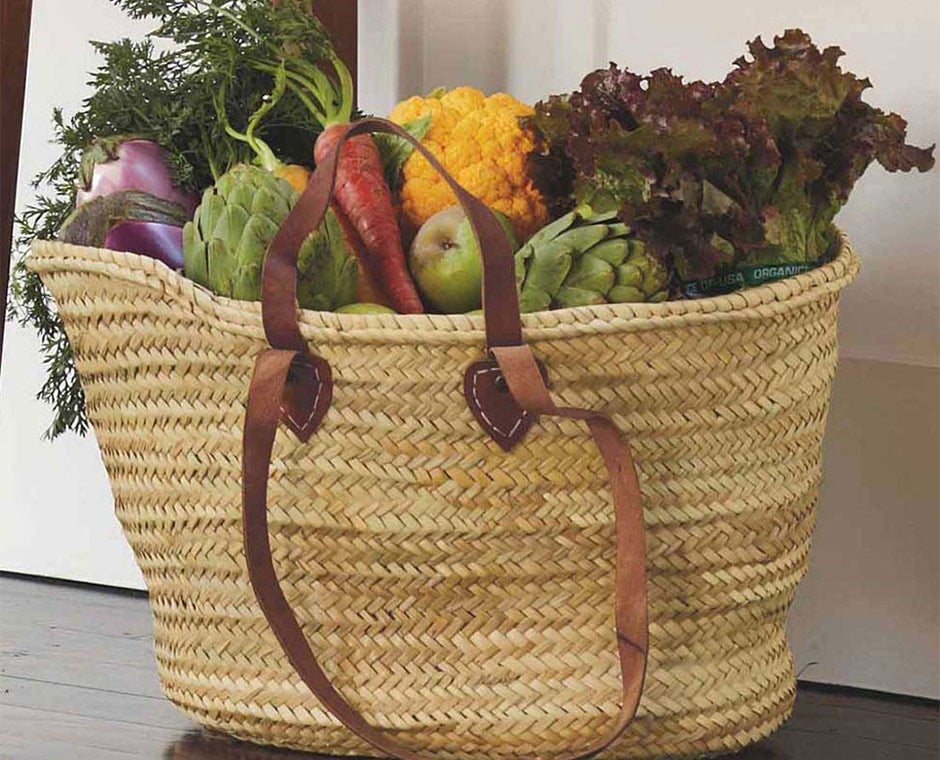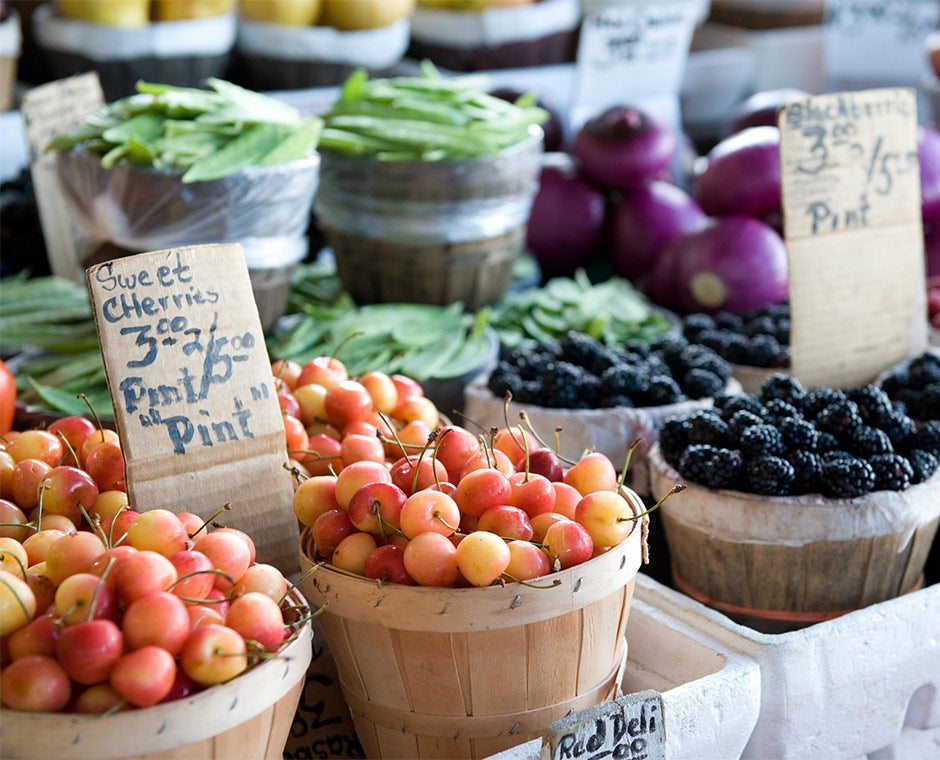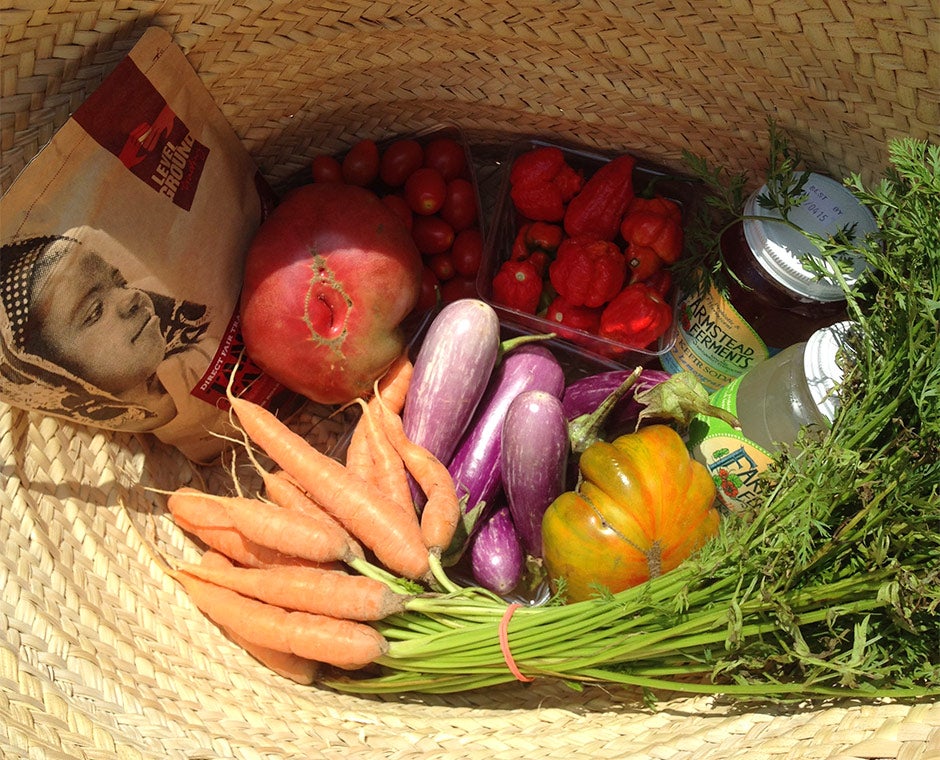Navigating the Farmer's Market
At VivaTerra we love a good farmer’s market. Fresh organic produce, environmentally friendly local shopping, and a slew of artisan made products and US grown goods. In fact, we may even dare to call ourselves farmer’s market connoisseurs. With markets all across the country in full swing, and summer threatening to wind down before we know it, we thought we would share a few tips on making the most of your local market while you still can. Whether you’ve never stepped foot in your local market or you are a total veteran, we hope you can learn a bit from our team’s “best advice on navigating the farmer’s market.”
1. Get Outfitted: For starters, you will want to carry a good market tote. Sure, most stands are going to have plastic bags available, and sure, you can recycle them later. But why take one at all if you don’t have to? Plus, having all your items in one place is more convenient. You’ll want free hands to grab a fresh made donut or an iced coffee. Not to mention a market basket is more fashionable than adorning your arms in red and white “thank you thank you thank you“ bags. Secondly, dress the part. Markets are most popularly in operation during the warmer summer months. So, you’ll want to be cool and comfy, stylish, yet casual. May we also suggest pockets? In short, our Organic Cotton Pocket Skirt is a perfect fit for the market—stylish, airy and convenient. Top off with the Madagascar Hat to gain a little personal shade and complete the look.

2. Scope it Out: Be sure to arrive early and do a full lap to see what is there. There’s nothing worse than jumping on buying something and then passing another stand later that has a better price, or a variation of something you prefer. Avoid any chance of buyer’s remorse by getting a quick lay-of-the-land before you shop.

3. Bring Cash: of course, with technology in this day-and-age, you can probably fair just fine at your local market without. There will be an abundance of iPad and app armed vendors happy to take plastic. But, for those smaller, more traditional stands, you won’t want to miss out on what they have to offer if you’re not prepared.
4. Negotiating Price: Maybe the prices aren’t so much better than the grocery stores, but without the store, your money goes straight to the farmers and you support your local economy. We’d advise not to try and haggle with vendors or question their prices, as this may put them on the defensive. There are a few methods you can use though, to get a better price:
Ask for “seconds.” This is produce that is visually damaged or bruised and may not be on display. If you don’t need items to be beautiful—say you plan to juice them, dice them, or can them—then seconds are a great option for you.
Ask about bulk pricing. Going to a cook out? Baking a few pies? Ask to buy a whole box of peaches or apples and see if a discount is available for buying at a higher volume.
Prices may be lower if you wait a few weeks after the beginning of a fruit or vegetable’s season, because at first less farmers may have them available. Wait until they are in full swing and let competltion drive down the price for you.
There are two tactics to saving by arriving at different times of the day. You might need to visit a few times, at different times, to figure out which happens more often at your specific local market. Option one is to go early; there may be a great deal on produce that you miss simply due to the fact that the farmer runs out of stock before you get there. The second option is to go late; sometimes farmers are eager to get rid of what they do have left over. You may score a great deal if you are around when they drop the prices to empty their stands.
5. Expand Your Horizons: The farmers market is a great place to explore something new! Look out for things you’ve never tasted before and ask farmers or stand owners to tell you a little bit about them.

6. Learn the Tricks of the Trade: There may be no worse disappointment than bringing your fruits and veggies home only to find out they are under or over ripe when you’re ready to use them. To avoid this, we give you full permission to judge the book by its cover. Here are a few tips on how to spot perfect produce right on the shelf:
Avocados, Tomatoes, and Mangos: These three fruits (and yes, they are all technically fruits!) have more to tell than meets the eye. You are going to want to pick these guys up and give them a squeeze. If they are very firm, or have little to no give beneath your fingertips, they are not ready. If they feel “squishy” they are overly ripe. All should have a general firmness in your palm but give a little when you give them a poke.
Pineapples, Strawberries, and Peaches: This aromatic trio has one dead give away: smell. Always look at the color first—you don’t want to go crazy sniffing every fruit in the basket. Pineapples should be golden brown and show little to no green at the base. Peaches should be striated red and yellow. Strawberries should be bright to deep red. After that, give ‘em a sniff. Peaches and strawberries will smell almost exactly how they’ll taste, and a pineapple should smell slightly sweet.
Cantaloupes and Watermelon: These two are always worth their weight in flavor. Both melons will feel heavy when they are ripe. For cantaloupes, when you slightly push the stem at the end you should feel a little give; for watermelon, look for a yellowish color on its underside and listen for a hollow sound when you knock on its side.
Honeydew, Cucumber, Corn and Eggplant: An unlikely group with only one real thing in common, you can take them at face value. Honeydew should be waxy, smooth, and golden in color. Eggplants should have a fresh green stem and cap with a deep purple, solid-colored, elastic skin. For corn, look for a still green husk and silk threads that cling to the kernels. The cucumbers are the easiest; just find dark green skins and double check for firmness.
7. Putting Your Harvest to Use: To really get the most from your local, organic, perfectly in season produce, look up some raw recipes! Sure you could smother those carrots in a buttery brown sugar glaze (and we aren’t saying don’t!) But the best part of fresh, flavorful produce is the great natural taste.


